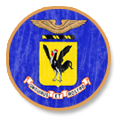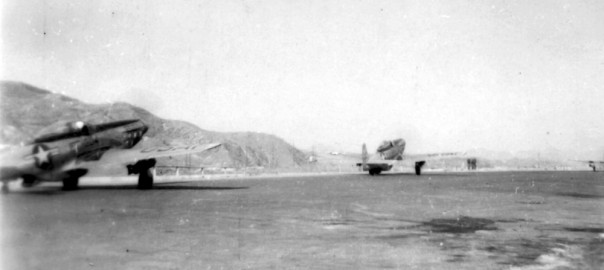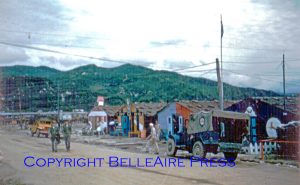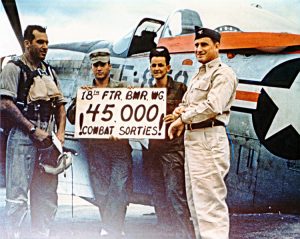End of an Era:
Conversion “In the Field” From Mustangs To Sabrejets
The 18th Fighter-Bomber Wing was the last American combat unit to fly the P/F-51 “Mustang” in combat—ending an era during which the Mustang reigned supreme as the world’s best fighter plane. Only in January 1953 was the 18th Wing converted to the F-86 fighter-bomber jet aircraft. The last F-51 combat mission was flown from K-55 on 23 January 1953.

As a tribute to its leadership and adaptability, the 18th Wing is the only known Air Force flying unit to be asked to convert from one type of aircraft to another—while engaged in combat and without “standing down” from required combat mission completions—not once, but twice and while operating from “forward operating bases.”
In July 1950, 18th Wing squadrons were ordered to convert from F-80 “Shooting Star” jet aircraft to the aging F-51 “Mustang” fighter-bomber. In January 1953, 18th Wing Squadrons converted from the F-51 “Mustang” to the F-86 “Sabrejet”—again while in active combat and while meeting all operational commitments.
The 18th Fighter Bomber Group at the end of 1952 “was an F-51 unit composed primarily of recalled Air Force Reserve Officers, none of whom were jet qualified,” the 18th noted.
“January and February of this reporting period presented the Group with the mammoth task of conversion in the field,” the Group reported. In January 1953, immediately following the movement and consolidation of the 18th Wing at K-55 (approximately 40 miles south of Seoul), “a conversion from F-51 aircraft to F-86F aircraft was accomplished,” the 18th FBW monthly report noted.
The retraining process was launched in early January 1953 with the activation of the 18th Combat Crew Training Flight (Provisional) whose function was to instruct, “assigned pilots in the operation of jet fighters.
Pilots from the 2 Squadron SAAF were the “first to undergo transition training [to the F-86]. Each of these pilots received a minimum of one transition flight in the T-33 aircraft and a minimum of two instrument instruction flights with USAF instructors.” After completing training for the SAAF pilots, the training flight moved over to train 12th Squadron pilots in the T-33 jet trainer aircraft, while simultaneously “acting as instructors for the South African pilots who were checking out in the F-86.” They then moved on to the 67th Squadron.
“Converting a flying organization from one type of aircraft to another type aircraft is a difficult proposition under optimum conditions,” the 18th FBW noted in its monthly report. “The task of conversion under the conditions with which this Wing was faced proved to be tremendous. We had just competed a move to an unfinished air base in the middle of the winter. Construction of buildings and hangars in the flight line area had not commenced. The entire area of the base with the exception of the concrete runway, taxi strips and hard stands was one big mud hole. Maintenance of aircraft had to be accomplished in the open and this proved to be a serious handicap because of the cold weather. Exposure to the weather causes many persons to become sick. Effectiveness of aircraft maintenance suffered as a result. Living quarters were over crowded. There were no clubs or other activities available to occupy what spare time the men had. They ate, they slept, and they worked if they were physically able. Despite the terrific hardships encountered, the personnel of this Wing did the job and the conversion was a success.”
The 12th Fighter-Bomber Squadron was ordered to “stand down” from flying combat missions and was first to start conversion to F-86s while the 2 Squadron South African Air Force and the 67th Squadron continued flying combat missions from K-46. Shortly thereafter the 2 Squadron SAAF “ferried their F-51s to Japan and returned to K-55 to commence conversion.”
On January 15th the 67th Squadron flew a maximum effort mission, taking off from K-46 and landing at K-55. Four F-51s were turned around upon landing at K-55 and flew a JOC Alert mission the same day. The last F-51 mission was flown from K-55 on 23 January 1953. At this time it was decided to ‘stand down’ the 67th Squadron for logistical reasons due to the short time remaining to effect complete conversion. The 67th Squadron subsequently ferried their F-51s to Japan and started conversion training prior to the end of January.”
Excerpted from Truckbusters from Dogpatch, the Combat Diary of the 18th Fighter-Bomber Wing in the Korean War, 1950-1953.
Copyright 2017 BelleAire Press
 Truckbusters
Truckbusters 


